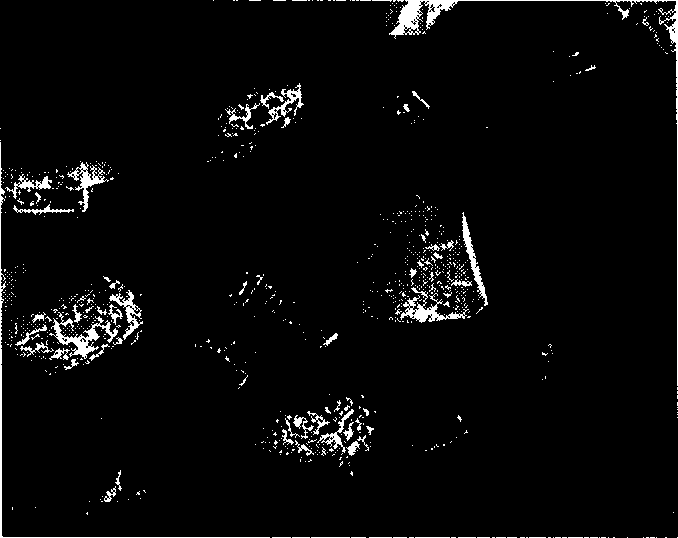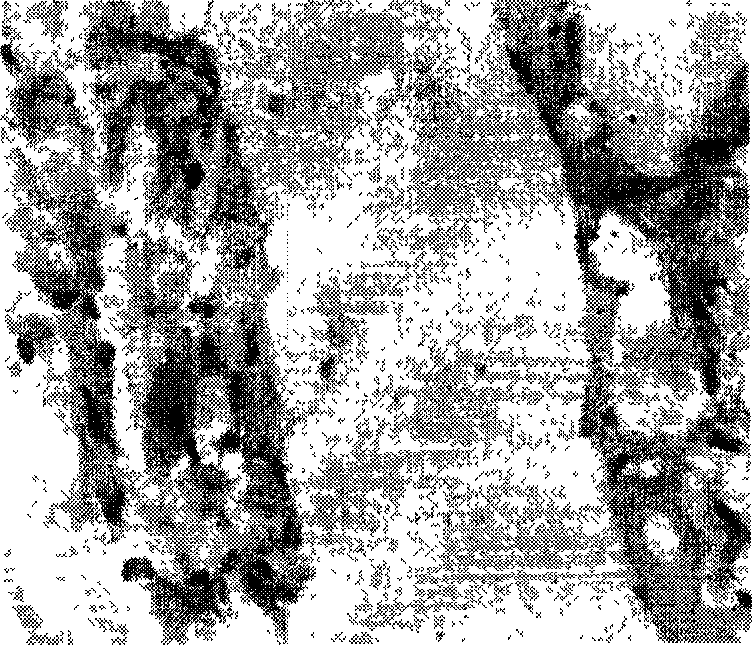New crystalline technology of fructose-1, 6-trisodium diphosphate
A trisodium diphosphate salt and a new process technology, which is applied in the direction of sugar derivatives, sugar derivatives, esterified saccharides, etc., can solve the problems of uneven product particle size and poor stability, and achieve easy control operation and improved Good uniformity and repeatability
- Summary
- Abstract
- Description
- Claims
- Application Information
AI Technical Summary
Problems solved by technology
Method used
Image
Examples
Embodiment 1
[0026] Dissolve 100g of anhydrous FDP trisodium salt in 300mL of water, adjust the pH to 4.8 with acetic acid, add 10g of sodium acetate, add 450ml of ethanol while stirring, and keep stirring at 25°C until crystallization is complete. The suspension was suction-filtered, the resulting white solid was washed with 85% ethanol, and vacuum-dried to obtain 128 g of the product with a crystallization yield of 95%.
[0027] Product analysis result C 6 h 11 o 12 P 2 Na 3 ·8H 2 O (molecular weight 550.18)
[0028] Element Measured value (%) Theoretical value (%)
[0029] C 13.6 13.10
[0030] H 5.02 4.96
[0031] O 58.28 58.16
[0032] P 11.23 11.26
[0033] Na 12.31 12.53
Embodiment 2
[0035] In the 30% FDP solution, adjust the pH values to 4.5, 4.8, 5.0, and 5.2 respectively, add 8% sodium acetate, add 1.6 times the volume of ethanol of the FDP solution while stirring, and keep stirring at 30°C until crystallization is complete. Suction filtration, washing with ethanol, and vacuum drying. Table 1.1 gives the product particle size distribution.
[0036] It can be concluded that pH has a great influence on the distribution of crystal particles. The pH of the solution increased from 4.5 to 5.2 with a difference of 0.7, but the average particle size difference of the crystals was 84 μm. Therefore, the purpose of controlling the particle size of the crystals can be achieved by controlling the pH value of the solution.
[0037] pH
Embodiment 3
[0039] Add 8% sodium acetate to the 30% FDP solution at pH 4.5, add 1.6 times the volume of ethanol of the FDP solution while stirring, and keep stirring at 20°C, 25°C, and 30°C until crystallization is complete. Suction filtration, washing with ethanol, and vacuum drying. Table 1.2 gives the product particle size distribution.
[0040] temperature
[0041] Temperature has a great influence on FDP crystallization, especially on the size of FDP crystal grains. The crystallization temperature increases from 20°C to 30°C, while the crystal particles increase from 92μm to 241μm. Therefore, crystals of different particle sizes can be produced by adjusting the crystallization temperature.
PUM
 Login to View More
Login to View More Abstract
Description
Claims
Application Information
 Login to View More
Login to View More - R&D
- Intellectual Property
- Life Sciences
- Materials
- Tech Scout
- Unparalleled Data Quality
- Higher Quality Content
- 60% Fewer Hallucinations
Browse by: Latest US Patents, China's latest patents, Technical Efficacy Thesaurus, Application Domain, Technology Topic, Popular Technical Reports.
© 2025 PatSnap. All rights reserved.Legal|Privacy policy|Modern Slavery Act Transparency Statement|Sitemap|About US| Contact US: help@patsnap.com



